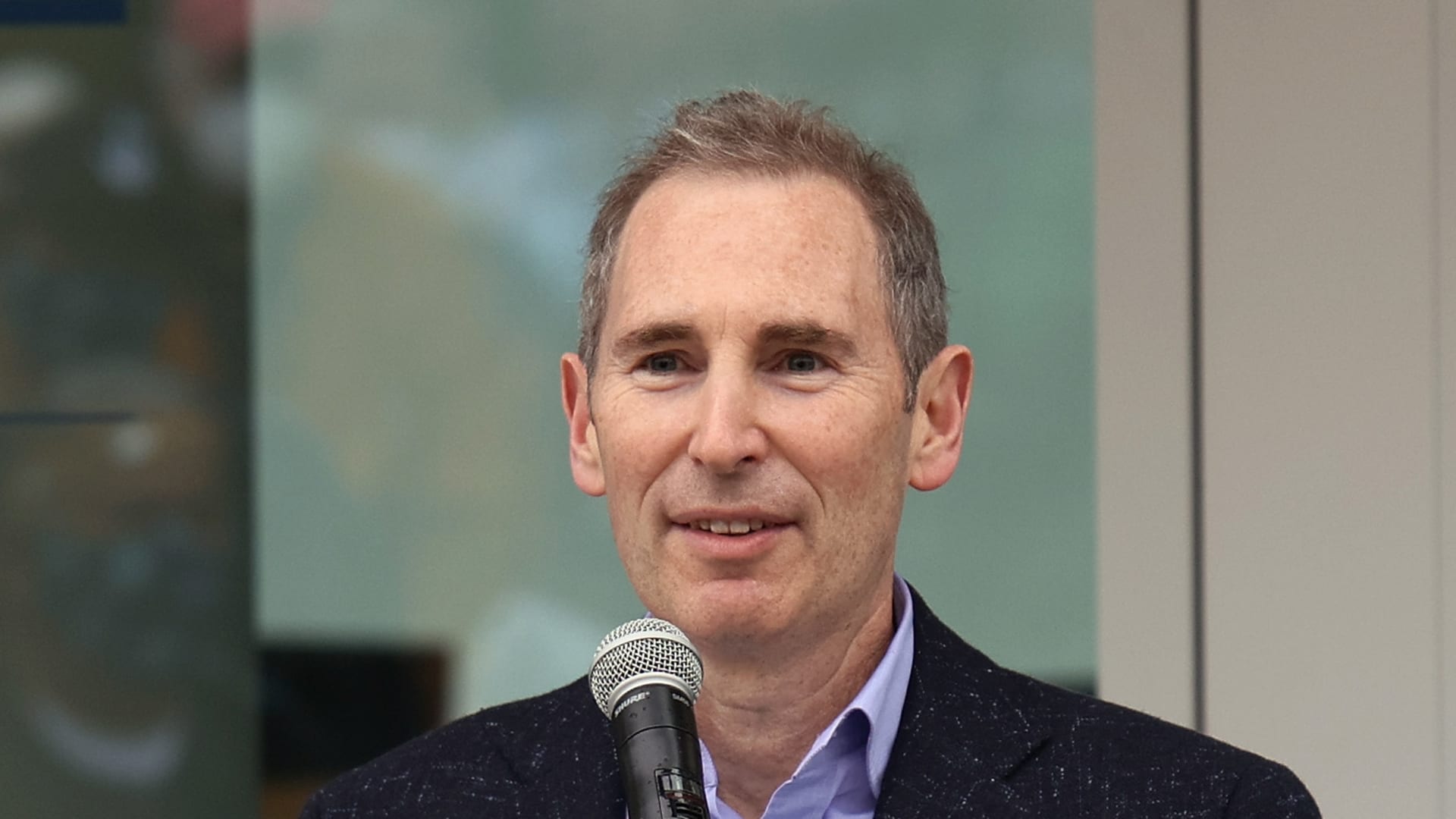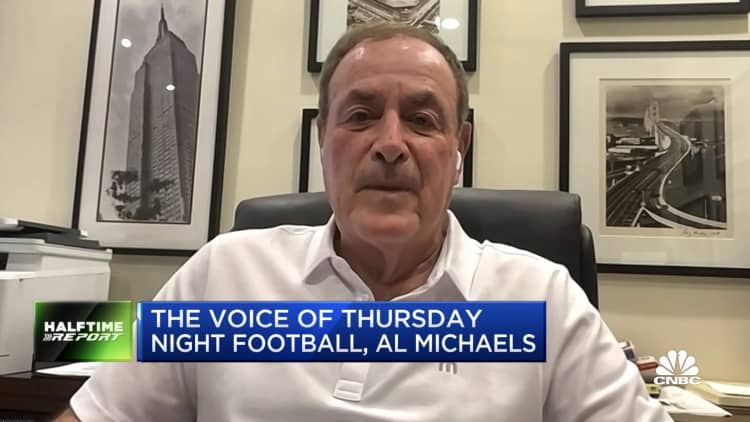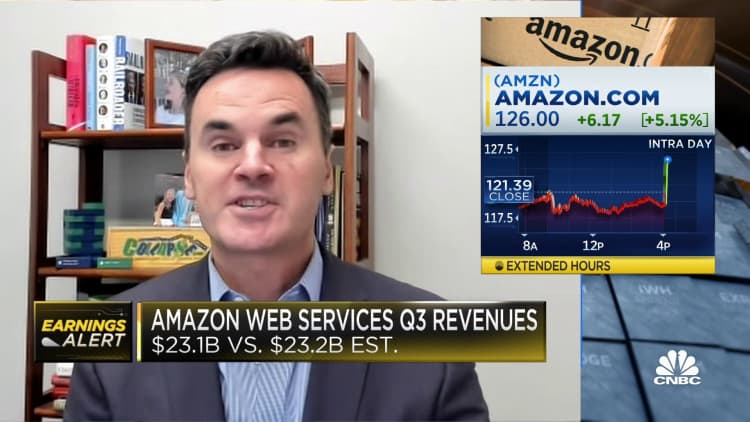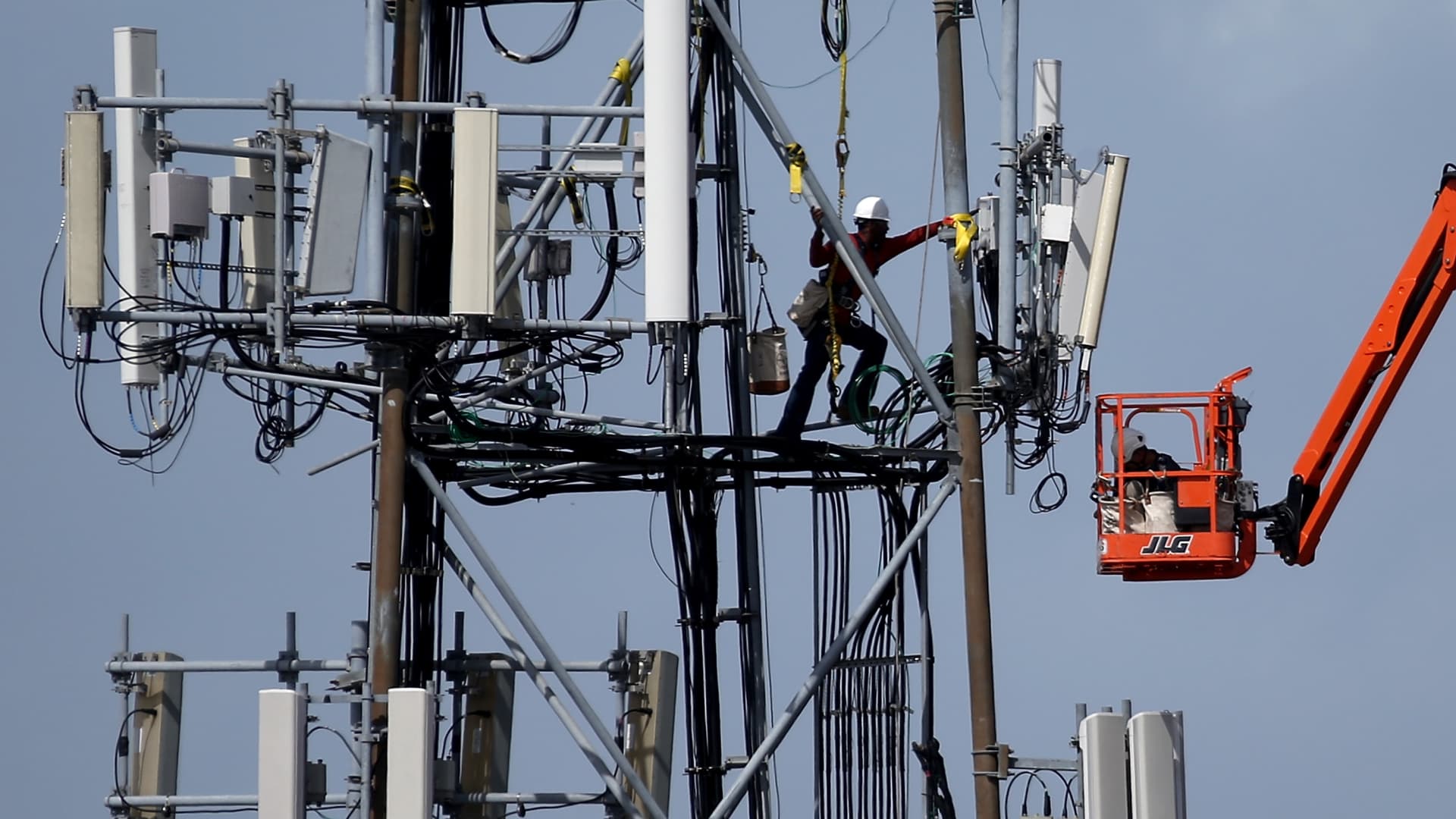
Andy Jassy, CEO of Amazon, speaks at the ceremonial ribbon cutting prior to tomorrow’s opening night for the NHL’s newest hockey franchise the Seattle Kraken at the Climate Pledge Arena on October 22, 2021, in Seattle.
Bruce Bennett | Getty Images Sport | Getty Images
Amazon founder Jeff Bezos famously told rivals, “Your margin is my opportunity.” His successor as CEO, Andy Jassy, is telling Wall Street about opportunities to increase margin.
Jassy, who took the helm in mid-2021, has been laser focused on trimming costs across the company for over a year, eliminating 27,000 jobs since last fall, axing some riskier bets and reshaping Amazon’s fulfillment network to emphasize speed and efficiency.
Suddenly, Amazon is a profit machine.
In its third-quarter earnings report on Thursday, Amazon reported an operating margin of 7.8%, the highest since it reached a record of 8.2% in the first quarter of 2021. The company’s operating margin, which is the profit left after subtracting costs to operate the business, was 2% a year ago and has historically hovered in the low single digits. Bezos was perfectly comfortably running with a negative margin on occasion.
But the world has changed since early last year, when Wall Street turned on tech and an extended bull market came to a halt. Rising inflation and higher rates pushed investors out of risk and forced tech companies to resize.
Jassy used some form of the word optimize more than 20 times throughout the earnings call on Thursday. He was primarily referring to Amazon’s own cost-cutting endeavors or the efforts made by customers of Amazon Web Services to lower their cloud bills while maintaining or even improving performance.
When it comes to client spending, Jassy said things are starting to look a little better.
“While optimization still remains a headwind, we’ve seen the rate of new cost optimizations slowdown in AWS, and we are encouraged by the strength of our customer pipeline,” he said. AWS has experienced slowing growth in recent quarters but is seeing some “cost optimization attenuate,” especially as demand for generative artificial intelligence picks up, he said.
AWS revenue increased 12% in the quarter, a slower pace of expansion than what was reported by smaller rivals Microsoft Azure and Google Cloud.

Amazon’s stock initially seesawed after hours. But Jassy’s optimistic commentary on the call boosted the shares more than 5% to $125.98. Jassy and other Amazon executives spoke at length about the company’s progress when it comes to reining in costs.
Net income more than tripled to $9.9 billion, or 94 cents a share, from $2.9 billion, or 28 cents a share, a year earlier. Analysts were expecting earnings of 58 cents a share, according to LSEG, formerly known as Refinitiv. Revenue also beat estimates, climbing 13% to $143.1 billion.
The company pointed to a “regionalization” effort within its shipping operations that’s led to faster yet cheaper deliveries. Instead of operating as a national model, the company carved up its shipping network into eight regions, which means packages travel over shorter distances and are handled by fewer employees. That’s lowered the “cost to serve,” Jassy said.
Advertising services, which along with AWS delivers fatter profits than core retail, was key to the earnings bump in the third quarter. Revenue accelerated 26%, topping $12 billion. Ad growth is primarily driven by third-party sellers and brands that pay to have their products appear higher in search results on Amazon’s website and app, CFO Brian Olsavsky said.
Jassy said the ad business is also getting a big boost from the company’s deal with the National Football League. Amazon Prime Video is in its second season carrying “Thursday Night Football, and Jassy said ratings through the first six weeks are up 25% from last year.
“We’re also doing much better on the advertising side than we did in our first year, and that’s a property that’s really valuable,” Jassy said. “It’s the one game that week and advertisers want to be in front of customers because there’s 13 million customers a week watching.”
In terms of cutting costs, Jassy isn’t done. Amazon’s still being cautious on headcount by taking a slow approach to hiring, rehiring and filling open positions, Olsavsky told analysts.
Amazon’s spending on sales and marketing declined during the quarter from a year earlier, and the company has put in place better cost controls in “non-people categories” like infrastructure, Olsavsky added.








